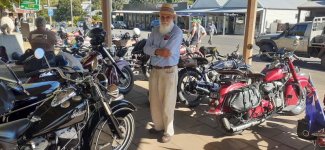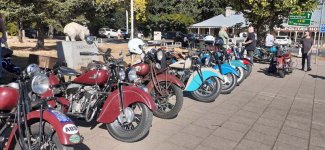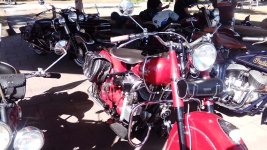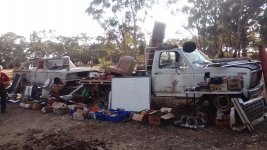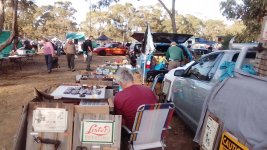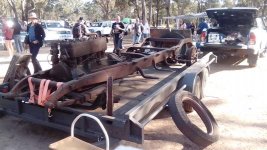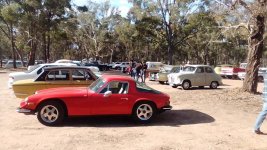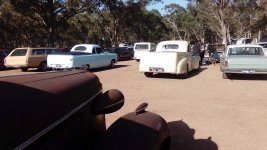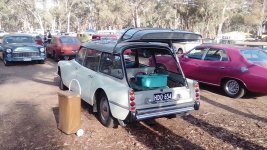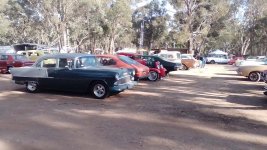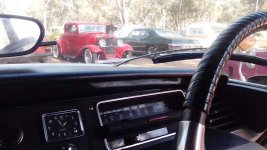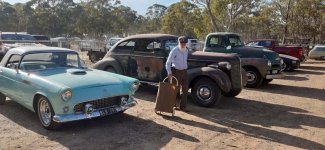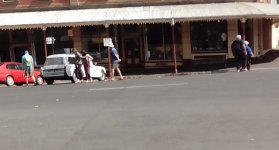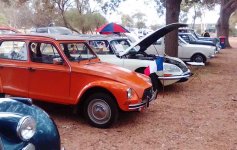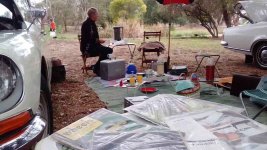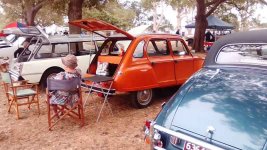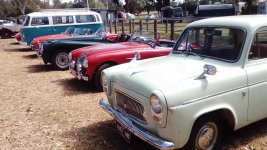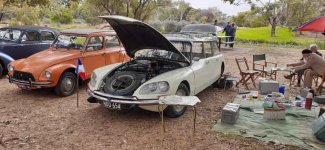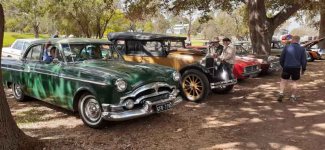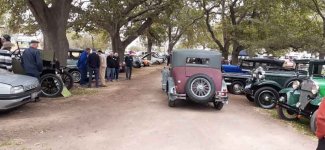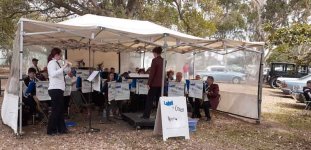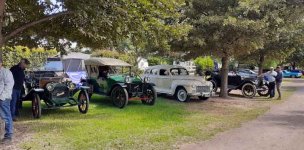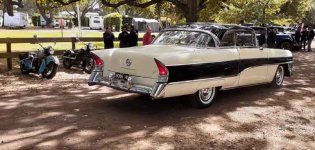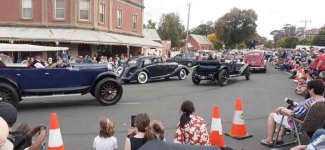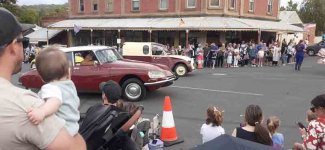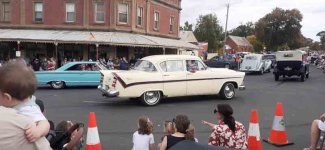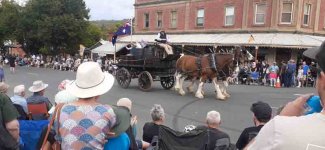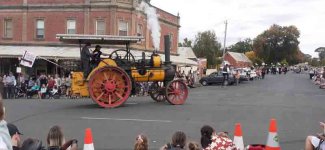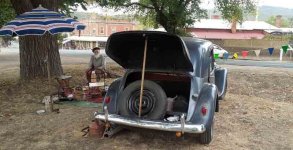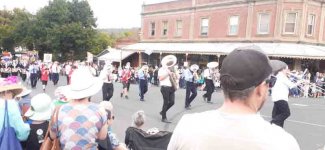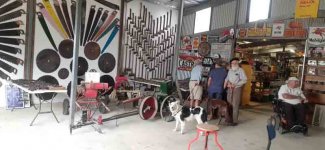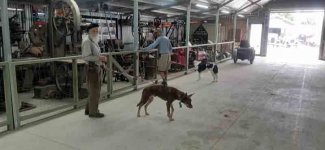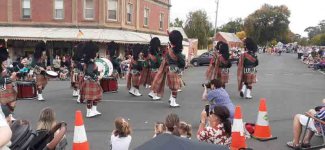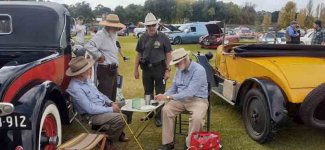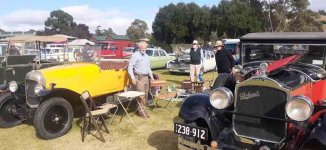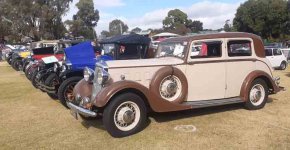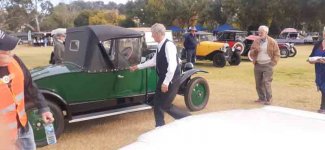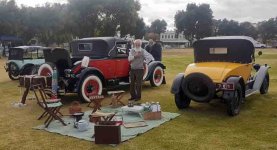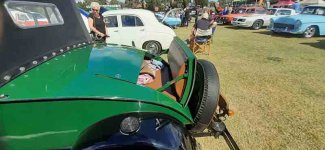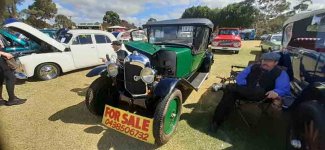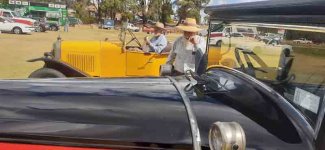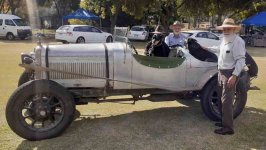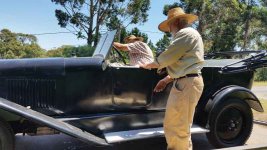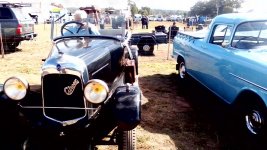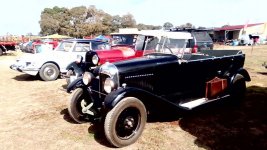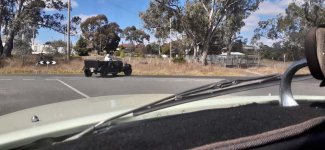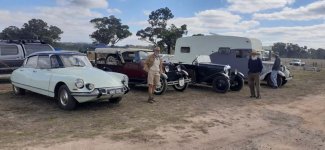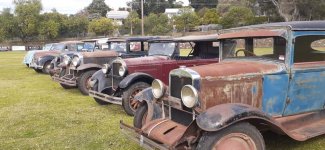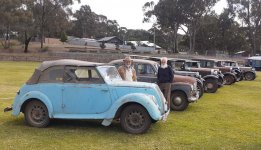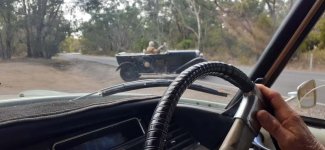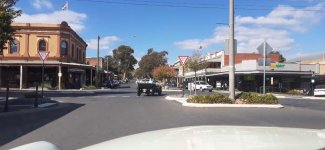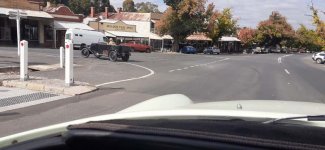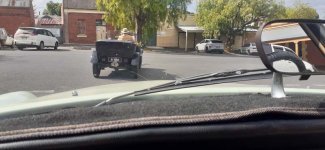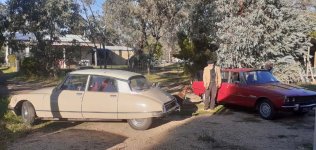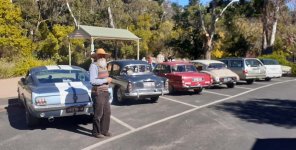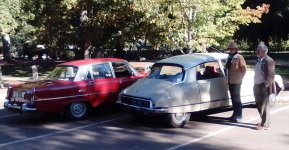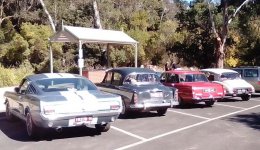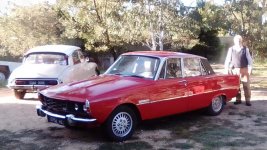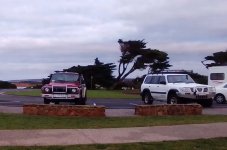Hello Gerry, yes as you can see by my post just up from here the 1948 Packard is a strange looking beast as you alluded to.There was a 47 Packard that used to attend the concourse events held at Lilydale in the late seventies. All midnight blue and absolutely magnificent. In 48 they lowered the grille height by about half, and totally ruined the dignity of the whole car.
CLUNES TRUCK SHOW 10Th March 2024
MOOMBA PARADE CANCELLED !!! Having lived the bulk of my life in Queensland these words don’t resonate with me as they might to the true blue Melbournian. Yes, it is hot.
Yesterday we left home in our 1929 Chrysler to head for the old gold town of Clunes where the Annual Truck & Vehicle Show is held. At between 7 and 8am it was a delight to be driving through the beautiful farming country of this region. We were hoping to see a Citroen DS which was to call in on its way to Tasmania.
Brother Michael turned up not long after us from Castlemaine in his 1950 Cyclops Rover as we were setting up our display. We were glad this event wasn’t cancelled because of the hot weather but didn’t expect a big turnout.
The mostly dry heat doesn’t bother me as does the often sauna conditions experienced in Queensland.
Surprisingly there was a decent lot of cars along with the many trucks and some buses on display. Our wind-up gramophone and trinkets of the past gave joy to many as they reminisced of days gone by. Close by in a shed the owner of a red Mark VII Jaguar showed us a two tone green Mark VIII Jaguar for sale at $10,000. The engine ticked over nicely which was fun to hear as these engines were the life blood of the XK120’s, 140’s and 150’s. It needed finishing off with upholstery and dash work which I suppose the young crowd would rather put in to an old Holden EK or more excitedly, a Monaro. To ask the youth of today to become excited about a Traction or DS is probably pushing it as much as this grand old car.
The journey home was without drama although a few steep long hills might have told a different story. The Hot day might not have helped to bring the DS to Clunes or it might be still travelling the highways from Queensland as I write this.
The Saturday a week before saw us travelling to the Ballan swap meet in our 1955 Light fifteen. I picked up some old blinker parts which allowed me to finish a project of replacing the 1970’s versions that were still on the car. Some after market blinkers get away with it but some do not.
For everyday transport the ’68 Safari and ID19 have been going well along with the Big six. We were out to a market in Kyneton for some olive oil and on the way home, in our 1954 Sunbeam Alpine, came across about 20 pre 1953 Indian motorbikes which again was good fun.
John
Attachments
-
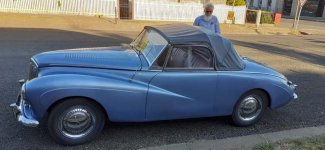 Alpine Kyneton Mar-24.jpg81.4 KB · Views: 81
Alpine Kyneton Mar-24.jpg81.4 KB · Views: 81 -
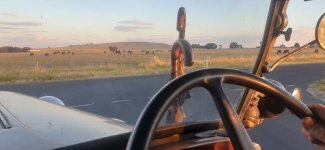 CLUNES TRUCK SHOW 2024-b.jpg60 KB · Views: 73
CLUNES TRUCK SHOW 2024-b.jpg60 KB · Views: 73 -
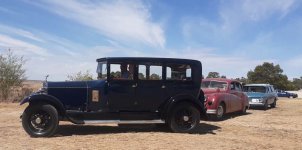 CLUNES TRUCK SHOW 2024-g.jpg71.7 KB · Views: 76
CLUNES TRUCK SHOW 2024-g.jpg71.7 KB · Views: 76 -
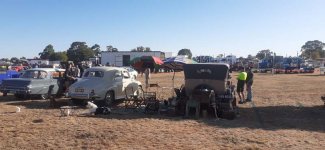 CLUNES TRUCK SHOW 2024-k.jpg82.8 KB · Views: 75
CLUNES TRUCK SHOW 2024-k.jpg82.8 KB · Views: 75 -
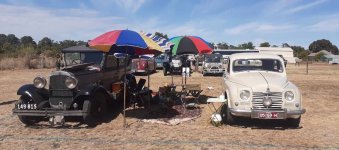 CLUNES TRUCK SHOW 2024-n.jpg88.9 KB · Views: 78
CLUNES TRUCK SHOW 2024-n.jpg88.9 KB · Views: 78 -
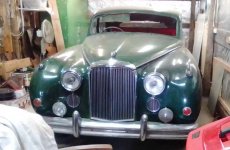 JAG Mk VIII - b.jpg90 KB · Views: 81
JAG Mk VIII - b.jpg90 KB · Views: 81 -
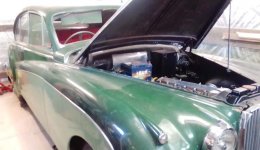 JAG Mk VIII - d.jpg77.1 KB · Views: 74
JAG Mk VIII - d.jpg77.1 KB · Views: 74 -
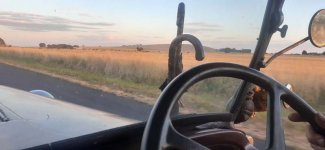 CLUNES TRUCK SHOW 2024-e.jpg58.7 KB · Views: 77
CLUNES TRUCK SHOW 2024-e.jpg58.7 KB · Views: 77 -
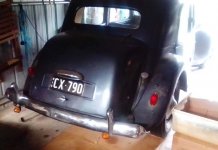 LT 15 Mar 24.jpg73.6 KB · Views: 83
LT 15 Mar 24.jpg73.6 KB · Views: 83 -
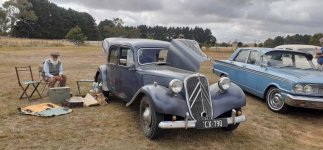 BALLAN SWAP 2-3-24 b.jpg89.7 KB · Views: 83
BALLAN SWAP 2-3-24 b.jpg89.7 KB · Views: 83

